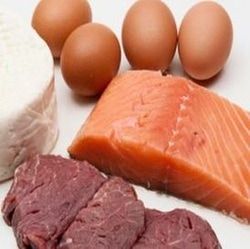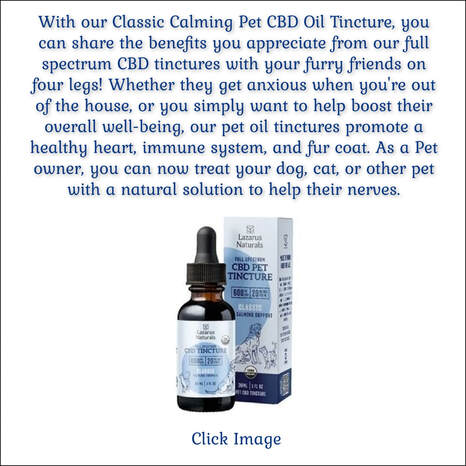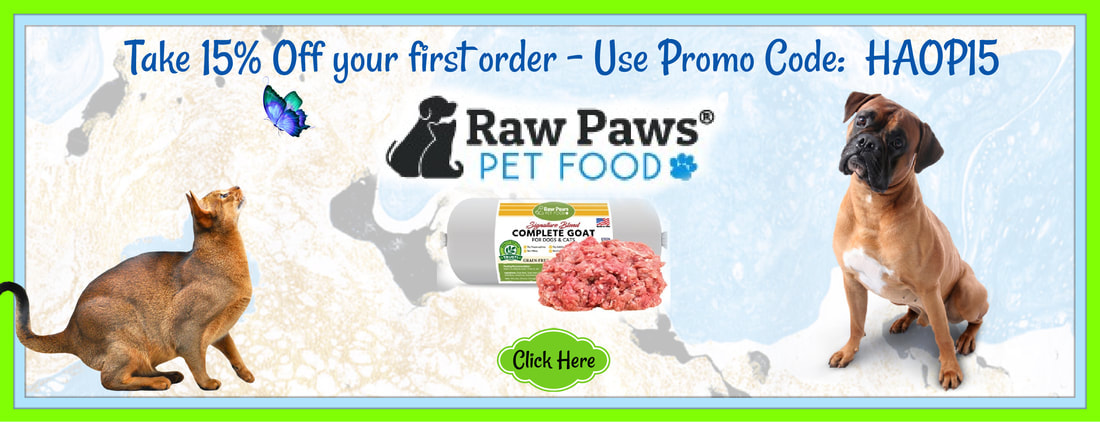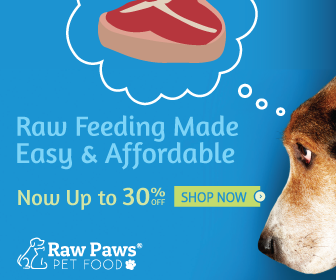
By PreyModelRaw
Feeding a Raw diet can be VERY easy if you follow some simple guidelines when making the switch from kibble to raw. Making this transition as easy as possible is the ultimate goal, because the easier it is for the dog, the easier it is for you as well. If following the guidelines set below, digestive upset should be at a minimum! This guideline is a tried and true method of making the switch with minimal issues with dogs.
You may not stick to the guideline 100%, finding yourself taking longer or even shorter to see the desired effect at each step of the way. That is perfectly fine. Every dog out there is different and can tolerate thing at their pace. Don’t feel that if you are falling behind in the schedule that you should just give up, keep going and you will get there when you do! With all that said, I do NOT recommend skipping steps. If you skip a step you might find yourself behind by two steps. This transition is meant to be slow, and for good reason: make it easy on the dog and yourself.
Feeding a Raw diet can be VERY easy if you follow some simple guidelines when making the switch from kibble to raw. Making this transition as easy as possible is the ultimate goal, because the easier it is for the dog, the easier it is for you as well. If following the guidelines set below, digestive upset should be at a minimum! This guideline is a tried and true method of making the switch with minimal issues with dogs.
You may not stick to the guideline 100%, finding yourself taking longer or even shorter to see the desired effect at each step of the way. That is perfectly fine. Every dog out there is different and can tolerate thing at their pace. Don’t feel that if you are falling behind in the schedule that you should just give up, keep going and you will get there when you do! With all that said, I do NOT recommend skipping steps. If you skip a step you might find yourself behind by two steps. This transition is meant to be slow, and for good reason: make it easy on the dog and yourself.
Commit To Change
Make the switch, cold turkey, no pun intended! You do not want to start off your dog on raw feeding while still eating kibble. The two do not mix well together because it “confuses” the body about what it’s digesting. Feeding raw and kibble at the same time causes digestive upset and it is not recommended. If you do not want to throw away the kibble you have left, either donate it to a local animal rescue organization, they probably need it more than you do, or finish it.
Make the decision to switch and stick to it. This is a gradual process that takes patience sometimes, so keep that in mind. Remember that you are doing this because it IS the best thing that you could ever do for your canine companions.
Prepare yourself.
You will need to get the appropriate supplies needed to make feeding raw as hassle free as possible. Depending on how many dogs you are switching to raw, the amount of supplies will vary greatly. We have 4 giant dogs that all eat raw, so we definitely need more room than say a person with just one Chihuahua to feed.
Make the switch, cold turkey, no pun intended! You do not want to start off your dog on raw feeding while still eating kibble. The two do not mix well together because it “confuses” the body about what it’s digesting. Feeding raw and kibble at the same time causes digestive upset and it is not recommended. If you do not want to throw away the kibble you have left, either donate it to a local animal rescue organization, they probably need it more than you do, or finish it.
Make the decision to switch and stick to it. This is a gradual process that takes patience sometimes, so keep that in mind. Remember that you are doing this because it IS the best thing that you could ever do for your canine companions.
Prepare yourself.
You will need to get the appropriate supplies needed to make feeding raw as hassle free as possible. Depending on how many dogs you are switching to raw, the amount of supplies will vary greatly. We have 4 giant dogs that all eat raw, so we definitely need more room than say a person with just one Chihuahua to feed.
I recommend getting at least one small dedicated freezer even if only feeding one dog. This way you can keep stock on a bunch of different types of meat at any given point in time. Some people do just fine using the space in the freezer they use for their food, but when getting into raw feeding you will find yourself continually looking for new sources of meats. Its best to always be able to take meat on a whim, and have space to store it. For example, lets say you come across someone on craigslist that is wanting to get rid of some elk meat, but they have 20 pounds of it. You should be able to take it all off their hands and repackage it into meals to last a long time so that you are not feeding anything but elk for 2 weeks straight. Keep in mind that you will also have a stash of chicken, turkey, pork, fish, beef, etc that needs to take up space as well!
Chest and standup freezers are both available on craigslist on a regular basis, and usually if you look hard enough you can find some really good deals.
You need to think, and prepare how you are going to store the meat in the freezer. Some people package meat into individual meals or into packages that are several days worth of food. Looking at containers is a good thing so you can plan out how many will fit in your freezer, etc. I prefer using containers that hold 2 days worth of food for our 4 dogs because they are reusable and more economical. I know others that use freezer bags as well.
Chest and standup freezers are both available on craigslist on a regular basis, and usually if you look hard enough you can find some really good deals.
You need to think, and prepare how you are going to store the meat in the freezer. Some people package meat into individual meals or into packages that are several days worth of food. Looking at containers is a good thing so you can plan out how many will fit in your freezer, etc. I prefer using containers that hold 2 days worth of food for our 4 dogs because they are reusable and more economical. I know others that use freezer bags as well.
|
Getting a scale is also a tool that you might want around in the beginning. A scale is used to measure out the amounts of meat per meal or per day.
Most importantly, set up connections with other raw feeders out there. Join forums, become active on them and gain the friendship and trust of the people who can offer you their advice and experience. Trust me, these connections are just as valuable as the health aspect is to your dog. These people will help you through all the steps of they way, tell you when you should relax or panic in a situation, in essence they will try and keep you sane through the process. Do some research. Find a wholesale meat distributor and set up a relationship with them, ask them if they have a program for raw feeders that they can get you signed up on (what we use for most of our meats). |
Doing a bit of Math
The feeding guideline is between 2-3% of the adult dog’s ideal body weight per day (keep in mind that this is for IDEAL weight…and that your dog might need to lose or gain some weight so adjust the amount accordingly!). For example, if a dog weighs 60 pounds, he should be getting 1.2-1.8 pounds of food per day. The 2-3% is just a guideline, and you should also take into account your dog’s energy level, age, breed, etc into account when figuring out how much to feed, which just might mean you would be giving more like 4% per day.
I will be honest here, we have never measured anything out. I find it much easier to just keep an eye on body condition, if they are looking heavy I cut back or vice versa. But there is absolutely nothing wrong with measuring different cuts of meat out in the beginning so you can get a feel on how much to feed. We know exactly how much to feed from just experience, as you will once you get the hang of it!
The feeding guideline is between 2-3% of the adult dog’s ideal body weight per day (keep in mind that this is for IDEAL weight…and that your dog might need to lose or gain some weight so adjust the amount accordingly!). For example, if a dog weighs 60 pounds, he should be getting 1.2-1.8 pounds of food per day. The 2-3% is just a guideline, and you should also take into account your dog’s energy level, age, breed, etc into account when figuring out how much to feed, which just might mean you would be giving more like 4% per day.
I will be honest here, we have never measured anything out. I find it much easier to just keep an eye on body condition, if they are looking heavy I cut back or vice versa. But there is absolutely nothing wrong with measuring different cuts of meat out in the beginning so you can get a feel on how much to feed. We know exactly how much to feed from just experience, as you will once you get the hang of it!
If starting a puppy, this takes a bit more math. Start off feeding 10% of its current weight, meaning if a puppy weighs 10 pounds, feed 1 pound per day. If this puppy is supposed to be 60 pounds full grown, its ideal amount of food per day is 1.2-1.8 pounds per day.
Once the puppy reaches ~18 pounds, or the 3% amount of adult body weight, you should back the amount down the 2-3% for normal feeding. You will only be feeding 10% for a little while, which is normal. Its better to split this amount up into several smaller meals since this will be a lot of food for a little growing puppy. Remember, this is just a guideline and that every dog is different.
The suggested guideline when figuring how much to feed of what is: 10% whole, raw bones, 10% whole, raw organ meats and 80% skeletal muscle meats. This 1:1:8 ratio best represents the average amount of bone, organ and meat tissue within prey animals. The way I see it, you should be feeding some bone, some organ and mostly muscle meat. I don’t do the math to figure out how in pounds/ounces to feed of each to my dogs. I just feed things that I know are mostly meat, some bone and some organ. If you want to do the math explicitly, there is absolutely nothing wrong with that, but you might have a hard time figuring out how much bone to meat there is in a turkey neck (which have a lot of bone in them by weight).
Once the puppy reaches ~18 pounds, or the 3% amount of adult body weight, you should back the amount down the 2-3% for normal feeding. You will only be feeding 10% for a little while, which is normal. Its better to split this amount up into several smaller meals since this will be a lot of food for a little growing puppy. Remember, this is just a guideline and that every dog is different.
The suggested guideline when figuring how much to feed of what is: 10% whole, raw bones, 10% whole, raw organ meats and 80% skeletal muscle meats. This 1:1:8 ratio best represents the average amount of bone, organ and meat tissue within prey animals. The way I see it, you should be feeding some bone, some organ and mostly muscle meat. I don’t do the math to figure out how in pounds/ounces to feed of each to my dogs. I just feed things that I know are mostly meat, some bone and some organ. If you want to do the math explicitly, there is absolutely nothing wrong with that, but you might have a hard time figuring out how much bone to meat there is in a turkey neck (which have a lot of bone in them by weight).
What to Feed, What Not to Feed
The more the variety the better, which goes for all muscle meats, bones and organs. Feed pretty much anything you can get your hands on, but the main staples that you will find are chicken, turkey, pork, beef, and fish. There are many others out there like elk, deer, rabbit, duck, quail, bison, etc.
When it comes to organs, make sure that you feed at least liver. Liver and kidney is better. Liver, kidney, pancreas, lungs, etc is even better. Heart and gizzard are both considered muscle meats when it comes to nutrition and do not count as organ meat.
There are only a couple of precautions with types of meat. All fresh fish coming from the Pacific Northwest should be frozen for at least a few weeks to kill off a parasite that transmits a disease that is called salmon poisoning. Second, don’t feed weight bearing bones from larger ungulates, like cows, buffalo or elk. Dogs have the potential to break teeth on these bones because they are designed to carry around up to several thousand pounds and you do not want your dog to chomp down on that! Ground meats should be fed at a minimum, I would say no more than once a week. Ground meats have a tenancy to have more bacteria and don’t provide any dental benefit to your dog. Lastly, stay away from oddly shaped or cut pieces of bone, like T-bones for example. These bones are more likely to cause a blockage.
The more the variety the better, which goes for all muscle meats, bones and organs. Feed pretty much anything you can get your hands on, but the main staples that you will find are chicken, turkey, pork, beef, and fish. There are many others out there like elk, deer, rabbit, duck, quail, bison, etc.
When it comes to organs, make sure that you feed at least liver. Liver and kidney is better. Liver, kidney, pancreas, lungs, etc is even better. Heart and gizzard are both considered muscle meats when it comes to nutrition and do not count as organ meat.
There are only a couple of precautions with types of meat. All fresh fish coming from the Pacific Northwest should be frozen for at least a few weeks to kill off a parasite that transmits a disease that is called salmon poisoning. Second, don’t feed weight bearing bones from larger ungulates, like cows, buffalo or elk. Dogs have the potential to break teeth on these bones because they are designed to carry around up to several thousand pounds and you do not want your dog to chomp down on that! Ground meats should be fed at a minimum, I would say no more than once a week. Ground meats have a tenancy to have more bacteria and don’t provide any dental benefit to your dog. Lastly, stay away from oddly shaped or cut pieces of bone, like T-bones for example. These bones are more likely to cause a blockage.
A good rule for picking out pieces of meat to feed, is that your dog should never be able to swallow anything whole without at least crunching down on it a few times to make it fit down. If your dog can swallow something whole stay away from it. The risk of choking or getting a blockage goes up if your dog can swallow it whole. For example, it's not recommended to feed chicken necks or drumsticks to large breed dogs because they tend to swallow them whole. Chewing through bones is one of the biggest benefits from a raw diet, so you might as well make them chew their food! Keep in mind that dogs don’t chew their food like we do, they don’t need to. They just have to make it small enough to fit down the hatch, so don’t panic if you see your dog crunch a chicken quarter 3 or 4 times and then swallow it.
This is called Prey Model Raw because it is all about mimicking the diet that dogs would thrive on if they were still wild. It differs from the BARF diet by not including vegetables, fruit and dairy. There is the age old debate of whether wolves/dogs are true carnivores and should have plant matter included in their diet. We here at PMR don’t believe they are a necessity. Will they harm your dogs? Probably not, maybe just a bit of digestive upset. But are they necessary? Absolutely not.
This is called Prey Model Raw because it is all about mimicking the diet that dogs would thrive on if they were still wild. It differs from the BARF diet by not including vegetables, fruit and dairy. There is the age old debate of whether wolves/dogs are true carnivores and should have plant matter included in their diet. We here at PMR don’t believe they are a necessity. Will they harm your dogs? Probably not, maybe just a bit of digestive upset. But are they necessary? Absolutely not.
Taking the Plunge
So, at this point you know what to feed, what not to feed, how much to feed, where and how you will store it, where to find good meats, have plenty of support from experienced people, set up connections with meat distributors or butchers. If so, I think you are ready to begin with the actual process!
Weeks 1 and 2
Fasting your dog one day before giving them anything raw is highly recommended, followed by a small meal of raw the first day is best. If switching a puppy to raw, it is not necessary to fast them a whole day since this is not good for them. I would recommend giving the puppy at least 6-12 hours between their last kibble meal and their first raw meal to keep the mixing of the two down to a minimum. Too much raw food all at once can be more detrimental than good. You will want to feed nothing but one protein source during this time. The most recommended thing to go with is bone in chicken parts, because chicken cheap, easy to find and easy for a dog to digest at first. I recommend feeding chicken backs for the first 2-3 days. Chicken backs are higher in bone content which the higher the bone content the firmer the stools will be because bone is a constipating agent, too much bone can cause problems but shouldn’t be an issue in the beginning. After the 3rd day I would add in chicken quarters alternating with backs, every other meal. Chicken leg quarters have a bit more meat to them, and less bone. You don’t want your dog to become constipated on nothing but chicken backs. Continue with alternating chicken backs and quarters until you have noticed consistent firm stools for at least 7 days in a row.
So, at this point you know what to feed, what not to feed, how much to feed, where and how you will store it, where to find good meats, have plenty of support from experienced people, set up connections with meat distributors or butchers. If so, I think you are ready to begin with the actual process!
Weeks 1 and 2
Fasting your dog one day before giving them anything raw is highly recommended, followed by a small meal of raw the first day is best. If switching a puppy to raw, it is not necessary to fast them a whole day since this is not good for them. I would recommend giving the puppy at least 6-12 hours between their last kibble meal and their first raw meal to keep the mixing of the two down to a minimum. Too much raw food all at once can be more detrimental than good. You will want to feed nothing but one protein source during this time. The most recommended thing to go with is bone in chicken parts, because chicken cheap, easy to find and easy for a dog to digest at first. I recommend feeding chicken backs for the first 2-3 days. Chicken backs are higher in bone content which the higher the bone content the firmer the stools will be because bone is a constipating agent, too much bone can cause problems but shouldn’t be an issue in the beginning. After the 3rd day I would add in chicken quarters alternating with backs, every other meal. Chicken leg quarters have a bit more meat to them, and less bone. You don’t want your dog to become constipated on nothing but chicken backs. Continue with alternating chicken backs and quarters until you have noticed consistent firm stools for at least 7 days in a row.
Don’t Panic
Hopefully at this point you haven’t seen any digestive upset! But if you have…DON’T PANIC! Dogs that have been on kibble for a long time generally have the hardest time with the switch because their bodies are not used to such a new food. Sometimes dogs go through something that some call the “detox” stage, but to me its more just a transition that the body must undergo from digesting overly processed, species inappropriate foods to whole, fresh, raw foods. During this time, digestive enzymes must change to be able to digest this new diet, and sometimes this can take up to a few weeks. Loose stool, and occasional vomiting is seen during this time, but these usually clear up within a day or so. If not, taking your dog to the vet is a good idea.
Seeing pieces of bone in stool is normal in the beginning, you will see less and less of this as time goes on. The body is in its adjustment phase and is still getting used to breaking down bones. Digestive enzymes are changing and their ability to break down bone becomes more and more affective as time goes on. Don’t panic if you see pieces of bone in your dog’s stool. Trust me, its normal.
This “detox” stage is the reason why weeks 1 and 2 are exclusively one protein source. It poses the easiest route for the body to become adjusted to a 180 degree change in diet. If you were to undergo the same change, going from mostly processed foods to fresh, whole raw foods, your body would not be the happiest in the beginning. In the long term your body would thank you immensely for the added health! Keep up the good work and stay strong. Make sure the connections you have made with your support team are there for you all along the way.
Hopefully at this point you haven’t seen any digestive upset! But if you have…DON’T PANIC! Dogs that have been on kibble for a long time generally have the hardest time with the switch because their bodies are not used to such a new food. Sometimes dogs go through something that some call the “detox” stage, but to me its more just a transition that the body must undergo from digesting overly processed, species inappropriate foods to whole, fresh, raw foods. During this time, digestive enzymes must change to be able to digest this new diet, and sometimes this can take up to a few weeks. Loose stool, and occasional vomiting is seen during this time, but these usually clear up within a day or so. If not, taking your dog to the vet is a good idea.
Seeing pieces of bone in stool is normal in the beginning, you will see less and less of this as time goes on. The body is in its adjustment phase and is still getting used to breaking down bones. Digestive enzymes are changing and their ability to break down bone becomes more and more affective as time goes on. Don’t panic if you see pieces of bone in your dog’s stool. Trust me, its normal.
This “detox” stage is the reason why weeks 1 and 2 are exclusively one protein source. It poses the easiest route for the body to become adjusted to a 180 degree change in diet. If you were to undergo the same change, going from mostly processed foods to fresh, whole raw foods, your body would not be the happiest in the beginning. In the long term your body would thank you immensely for the added health! Keep up the good work and stay strong. Make sure the connections you have made with your support team are there for you all along the way.
Weeks 3 and 4
At this point your dog should be doing awesome. You will even be able to notice a change in young healthy animals even. Coats looking softer and shinier. Teeth are looking bright white and clean, no more tartar, plaque or bad breath. Digestion is under control, those of you with constant diarrhea are at ease. What to do now?
Well, at this point you have probably become very excited and immersed yourself in the “raw world” looking for any possible connection for meat and what you can get your hands on. Well, keep up the research but tread lightly. While this far you have seen nothing but improvement, you can easily overdo things too early and end back up on square one. So you must be patient with adding in new things.
I recommend adding in something like turkey next. Turkey necks or wings would work great for this. Add in turkey alternating with chicken every other meal. If you don’t notice any problems with this addition, keep up with alternating one and then the other. If you have noticed a bit of looser stool, you can add in one turkey meal to every two chicken meals until you notice things are back to normal and then try and add more turkey back in. I would keep up with just chicken and turkey for at least a week of normal stools before adding in the next protein source.
At this point your dog should be doing awesome. You will even be able to notice a change in young healthy animals even. Coats looking softer and shinier. Teeth are looking bright white and clean, no more tartar, plaque or bad breath. Digestion is under control, those of you with constant diarrhea are at ease. What to do now?
Well, at this point you have probably become very excited and immersed yourself in the “raw world” looking for any possible connection for meat and what you can get your hands on. Well, keep up the research but tread lightly. While this far you have seen nothing but improvement, you can easily overdo things too early and end back up on square one. So you must be patient with adding in new things.
I recommend adding in something like turkey next. Turkey necks or wings would work great for this. Add in turkey alternating with chicken every other meal. If you don’t notice any problems with this addition, keep up with alternating one and then the other. If you have noticed a bit of looser stool, you can add in one turkey meal to every two chicken meals until you notice things are back to normal and then try and add more turkey back in. I would keep up with just chicken and turkey for at least a week of normal stools before adding in the next protein source.
|
The next protein source I recommend is pork or fish, either one. A lot of dogs will not eat raw fish, so you can give canned fish instead. Canned salmon, tuna, sardines or mackerel work well, but they are expensive if you have a lot of dogs to feed (canned tuna is not bone in, the rest should be). If going with pork, I would add in pork rib. Add either fish or pork in the same way you did with turkey, alternating it every other meal with chicken and turkey. For example, morning meal would be chicken, evening meal is fish, then the next day the morning meal is turkey. Continue this until you notice normal stool for a week on this type of feeding schedule. Again, if you notice loose stool, go in a bit lighter on the new protein source, until you can get it in every 3rd meal without a hitch.
|
As you can see, there is a trend of adding in just bone in meats in this transition. Remember that bone adds bulk to their stool, keeping them nice and firm. Monitoring bowel movements is a great way to see how a dog’s body is working and responding to the food that you are giving it. So by the end of this transition you will become a poo expert!
|
Weeks 5 and 6
Alright, well if you added in fish last time, add in pork and vise versa. Add them in the same techniques used before during the first couple of weeks. Week 6, I would add in beef, which is most likely not going to be bone in. Most bone in beef sources are not okay for dogs to eat because the bones are just way too dense for their teeth to crunch through. The only bone in beef source that we feed to our dogs is beef ribs, and its more of a treat and recreational chewing than a meal. Finding beef at a reasonable cost that isn’t ground can be a tough thing. Beef heart is what we tend to feed on a regular basis because it is considered muscle meat nutritionally, but it is very rich and its affordable. |
Adding beef heart is a bit trickier than anything else up to this point. Not only does it not have any bone to add bulk to stool, but its super rich. I recommend giving half the amount in weight of beef heart than you normally give. In this case, less can be better. Once your dog gets used to something so rich you can add in more.
Most likely you will see some loose stool. You can feed chicken backs a meal before and after for the added bone or in conjunction with the beef heart. Then the next day just do chicken and turkey. Feed your rotation of chicken, turkey, fish, pork and beef until you see a weeks worth of normal stool.
Weeks 7 and 8
Woohoo! You’ve made it this far, don’t stop now! Unfortunately this can be the hardest part of the whole process. This is the time when you add in organ meats. Lots of dogs refuse to eat organ meat. You might find yourself having to do a bit of prep work to the organs just to get your dog to eat them. This could mean doing a light sear with some spices or feeding it to them frozen, or the tried and true method that we use of just shoving it down their throats! Organs are an essential part of the prey model raw diet. They need them so you have to find a way to get your dogs to eat them, whatever that might be. Don’t cook them all the way through because most of the nutrition is lost during the cooking process. If you do a light sear, you want to go even lighter with each time you do this until your dogs will eat it basically raw, if not 100% raw.
Woohoo! You’ve made it this far, don’t stop now! Unfortunately this can be the hardest part of the whole process. This is the time when you add in organ meats. Lots of dogs refuse to eat organ meat. You might find yourself having to do a bit of prep work to the organs just to get your dog to eat them. This could mean doing a light sear with some spices or feeding it to them frozen, or the tried and true method that we use of just shoving it down their throats! Organs are an essential part of the prey model raw diet. They need them so you have to find a way to get your dogs to eat them, whatever that might be. Don’t cook them all the way through because most of the nutrition is lost during the cooking process. If you do a light sear, you want to go even lighter with each time you do this until your dogs will eat it basically raw, if not 100% raw.
























